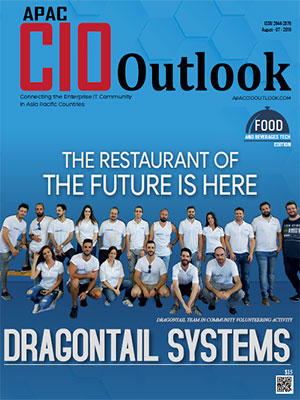The food and beverages industry is all set to embark on the digital journey with the advent of smart and intuitive technologies that drive visibility and preparedness. The industry aims to tap the ubiquitous mobile devices and connected technologies to enhance the consumer experience. The modern technologies bring a radical shift in the way the backend operations have been carried out over the years. Not to mention, they will completely redefine the front-end customer-facing processes in ways unimagined. As customers demand a variety of food choices, easy ordering, and faster delivery, modern restaurants, hotels, and quick service restaurants, among others must adopt a fresh approach to their processes.
Automation is set to make a grand entry into the food and beverages space. Having brought great value to the manufacturing and CPG (consumer packaged goods) industries, automation is now set to eliminate major redundancies and risks caused due to human intervention. Many restaurants are employing robots to bring enhanced accuracy and consistency in food preparation. As labor availability and cost crisis grips the industry, robots are the perfect fit for restaurants that are desirous of attaining higher customer satisfaction for a broader customer demographic.
With the democratisation of online, there are a growing number of restaurants that only cater to online orders. Such restaurants are increasingly equipping themselves with smart appliances and equipment that aid cooks and chefs to process food. Growing demands for faster delivery times will further push these restaurants to adopt automation and robotic technologies. From flipping burgers to managing the grill to tossing salads, the potential for robotic intervention is boundless.
As customers grow more digitally connected, their demand for better services is soaring. In such a scenario, personalisation is the next big push in the food and beverages industry; and restaurateurs plan to achieve this with data. Data hungry organizations are constantly assessing their customer’s food ordering patterns to deduce food preferences and other behavioural traits. These data provide insights on supplies-gathering, allowing the internal systems of a restaurant to place replenishment orders automatically. Such cutting edge technological features will enable small businesses to compete with globally established favorites.
At its core, the demand for organic produce is urging the food industry to adopt new technologies. Food warehouses and supply chains are also undergoing changes to keep up with the commercial trends in the industry.
To help CIOs navigate through the list of food and beverages technology solution providers, our distinguished selection panel, comprising CEOs, CIOs and VCs, industry analysts and the editorial board of APAC CIO Outlook narrowed the top 10 food and beverages technology solution providers in Australia and New Zealand that exhibit competence in delivering innovative technologies.
We present to you APAC CIO Outlook’s “Top 10 Food and Beverages Technology Solution Providers in Australia and New Zealand–2019.”



























